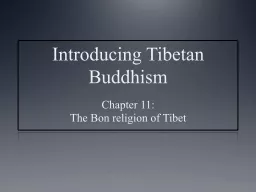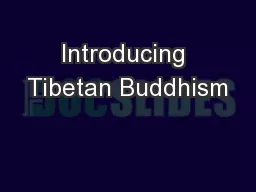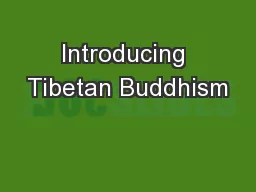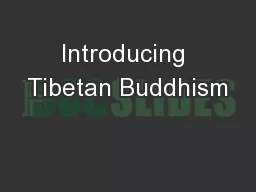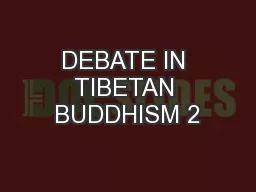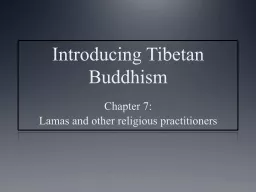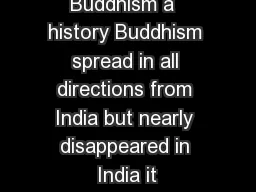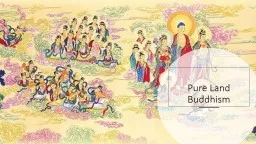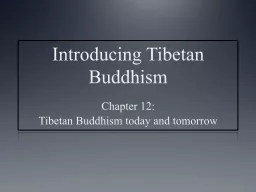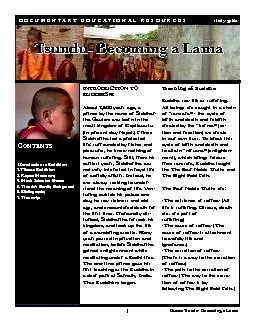PPT-Introducing Tibetan Buddhism
Author : relievinglexus | Published Date : 2020-06-22
Chapter 11 The Bon religion of Tibet Main topics covered Introduction Yungdrung Bon Bonpo narratives and teachings Bonpo history and the relationship with Buddhism
Presentation Embed Code
Download Presentation
Download Presentation The PPT/PDF document "Introducing Tibetan Buddhism" is the property of its rightful owner. Permission is granted to download and print the materials on this website for personal, non-commercial use only, and to display it on your personal computer provided you do not modify the materials and that you retain all copyright notices contained in the materials. By downloading content from our website, you accept the terms of this agreement.
Introducing Tibetan Buddhism: Transcript
Download Rules Of Document
"Introducing Tibetan Buddhism"The content belongs to its owner. You may download and print it for personal use, without modification, and keep all copyright notices. By downloading, you agree to these terms.
Related Documents

